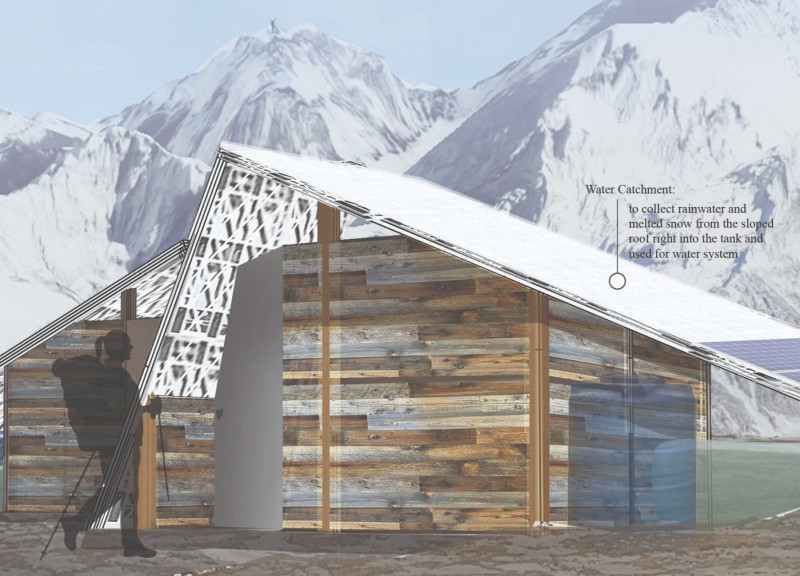5 key facts about this project
This architectural project focuses on the development of a self-sustaining facility designed for use in alpine and arctic regions, particularly targeting the Mount Everest area. The project aims to address the environmental concerns associated with increased tourism and climbing activities, specifically focusing on waste management and resource sustainability. The structure employs a modular design philosophy that allows for both adaptability and efficient construction.
The facility is intended to serve climbers and local communities, providing essential amenities while minimizing ecological impact. It features innovative systems for water collection and waste disposal, ensuring that the surrounding wilderness is preserved.
The use of modular components facilitates quick assembly and disassembly, allowing the structure to be repositioned or repurposed based on environmental conditions and usage needs. This adaptability is particularly crucial in rapidly changing alpine settings.
Sustainable design is central to this project’s approach.
Innovative Waste Management Systems A prominent feature of this facility is its waterless composting toilet system. This system eliminates the need for extensive plumbing and reduces water usage, vital in areas where water resources are limited. The facility also incorporates a water catchment system that collects rainwater for use, thus decreasing reliance on external water sources and ensuring that the facility can function independently.
The architectural design utilizes recycled materials to promote sustainability. Materials such as recycled wood, polycarbonate sheets, and repurposed plastic pallets form the backbone of the structure. These materials not only reduce the project's environmental footprint but also contribute to the overall aesthetic and functional performance of the building.
Community Integration and Educational Initiatives The project emphasizes community engagement by producing compost from human waste, which can be utilized to enhance local agricultural practices. This aspect of the design reinforces the connection between visitors and the local ecosystem, encouraging a symbiotic relationship that benefits both parties.
Furthermore, educational elements are embedded into the facility’s design, showcasing sustainable living practices to visitors. This focus on education helps to raise awareness about environmental issues specific to alpine regions and promotes responsible tourism.
The architectural outcomes of this project demonstrate a comprehensive understanding of the challenges posed by high-altitude constructions and the role architecture can play in mitigating these challenges.
For a more detailed exploration of the project, including architectural plans, architectural sections, and architectural ideas, those interested in sustainable architecture are encouraged to review the full presentation of the project.























